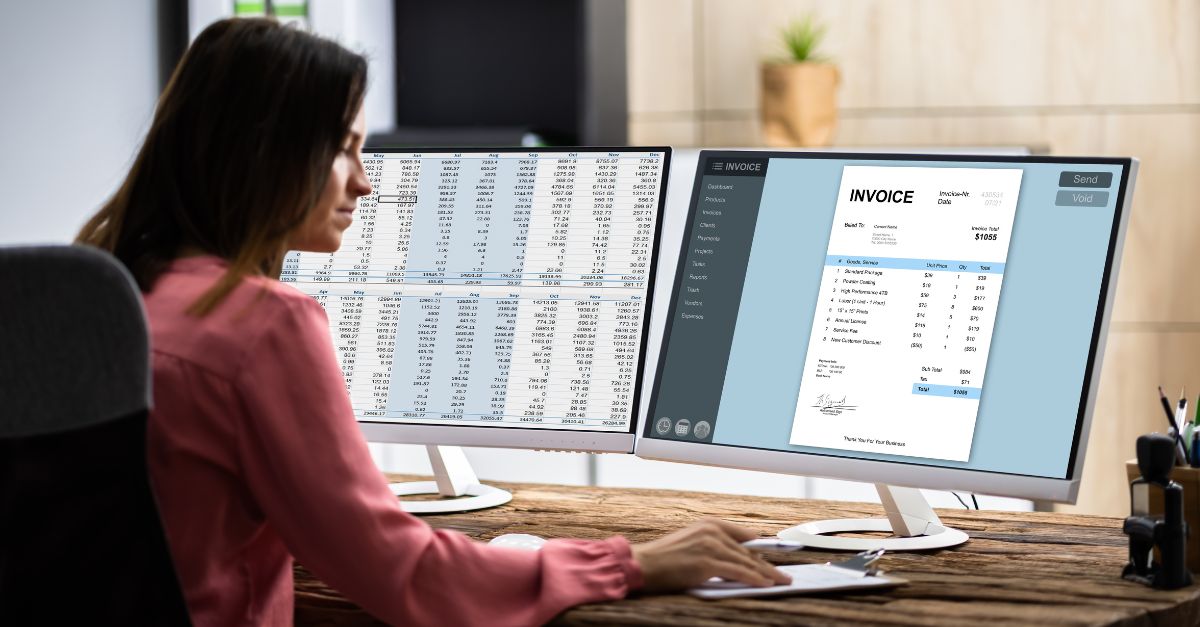Votre processus AP est-il sécurisé ? 4 bonnes pratiques pour les paiements interentreprises

Vos comptes fournisseurs peuvent-ils être considérés comme des paiements d'entreprise à entreprise (B2B) ? La réponse est oui. Vos vendeurs ou fournisseurs gèrent leur propre entreprise et les paiements de vos factures relèvent de la catégorie B2B. Cela dit, les paiements interentreprises ont atteint la barre des 113 000 milliards de dollars en 2023 et devraient continuer à augmenter au fil des ans. Toutefois, la réalisation de transactions d'une valeur de 113 000 milliards de dollars ne se fait pas sans heurts. 65 % des entreprises ont été victimes de fraudes financières en 2023.
Les statistiques susmentionnées montrent que l'augmentation des transactions interentreprises s'accompagne de la nécessité de mettre en œuvre des processus sécurisés afin d'éliminer la fraude. Toutefois, il est important de noter que l'accent est mis aujourd'hui sur les meilleures pratiques pour la mise en œuvre de votre processus de comptabilité fournisseurs. Il n'est donc que juste de souligner les autres défis auxquels les entreprises sont confrontées dans l'exécution des factures, en dehors de la fraude.
Défis liés au processus de comptabilité fournisseurs
- Saisie manuelle des données - Comment recevez-vous vos factures ? Par la poste ou par courrier électronique ? La plupart des PME font l'expérience d'un peu des deux, en raison des préférences de leurs fournisseurs. Si votre entreprise fait partie de cette catégorie, vous comprenez les défis associés à la recherche de vos bons de commande, à la réconciliation des comptes et à l'exécution des paiements à l'aide d'un stylo et de papier.
Le processus d'assemblage des factures à la main ou manuellement demande beaucoup de travail et est sujet à des erreurs. Le risque que la facture d'un fournisseur soit oubliée lors d'un paiement est également élevé.
- Suivi des factures - Les factures physiques sont faciles à perdre, quelle que soit l'attention que vous portez au stockage des documents financiers. Lorsqu'une facture est perdue, il est probable que vous l'oubliiez ou que vous deviez appeler le vendeur pour qu'il vous renvoie une autre copie. Si vous oubliez d'effectuer le paiement, cela peut nuire à vos relations commerciales avec vos fournisseurs. Les investisseurs potentiels pourraient également y voir un signal d'alarme.
- Sécurité contre la fraude - Tout comme le suivi des factures de vos fournisseurs est crucial pour le processus de comptabilité fournisseurs, la protection active contre la fraude est tout aussi importante. Compte tenu du grand nombre de chèques imprimés à l'aide d'un logiciel de comptabilité fournisseurs obsolète, il est important de protéger les informations relatives à votre compte en imprimant sur des chèques vierges, tout en utilisant le logiciel le plus récent, afin de réduire les risques en cas de vol de chèques, de lavage de chèques ou de piratage de logiciel.
4 bonnes pratiques pour sécuriser et optimiser votre processus de comptabilité fournisseurs
- S'attaquer aux points douloureux grâce à la technologie - Parmi les défis mentionnés ci-dessus, quels sont ceux auxquels votre entreprise est confrontée ? S'il s'agit de l'un d'entre eux ou d'une combinaison de ceux-ci, la transformation numérique de vos processus de comptabilité fournisseurs vous aidera à surmonter la plupart de vos difficultés. Les solutions de transformation numérique font référence à des logiciels de comptabilité fournisseurs capables de capturer vos factures dans un tableau de bord centralisé. La centralisation résout vos problèmes de collecte de données, réduit le risque d'oublier des factures ou des bons de commande et simplifie le processus de rapprochement des comptes. Vous pouvez également choisir de tirer parti de la technologie pour améliorer et sécuriser vos processus de paiement. Les processus de paiement tels que ACH, ETF ou chèques vous offrent la possibilité de répondre aux besoins spécifiques de vos fournisseurs.
- Intégrer les solutions de comptabilité fournisseurs aux logiciels de comptabilité - Les logiciels de comptabilité tels que QuickBooks sont d'excellents outils de saisie des données financières qui vous permettent de tenir des registres à jour. Cependant, ils sont conçus pour prendre en charge un large éventail de processus financiers, tels que la paie, la création d'états financiers, le paiement des impôts, etc., mais leurs fonctionnalités pour rationaliser le processus de comptabilité fournisseurs sont limitées. Bien sûr, ils peuvent stocker les coordonnées de vos fournisseurs, vos factures ou vos bons de commande, mais vous aurez besoin d'un logiciel de comptabilité fournisseurs pour le rapprochement, l'analyse et le paiement. C'est pourquoi le choix d'un logiciel de comptabilité fournisseurs qui s'intègre à votre logiciel de comptabilité vous aidera à rationaliser vos processus de paiement des fournisseurs. Vous pouvez apprendre à faire le bon choix à l'aide de cette liste de contrôle.
- Quantifier les avantages de l'investissement dans la technologie - Cette meilleure pratique s'adresse aux comptables, au service comptable et à tous les employés chargés de la comptabilité fournisseurs qui doivent rendre compte des progrès accomplis aux décideurs. Votre capacité à quantifier le retour sur investissement de l'utilisation d'un logiciel de comptabilité fournisseurs vous permettra d'obtenir le soutien continu de vos parties prenantes. Les avantages à prendre en compte sont à la fois tangibles et intangibles. Veillez à montrer comment le logiciel réduit le nombre d'heures de travail consacrées à la gestion de la comptabilité fournisseurs, élimine les erreurs, automatise le rapprochement des comptes, optimise les calculs et les relations de l'entreprise avec les fournisseurs.
- Obtenir l'adhésion de tous - Les décideurs qui introduisent l'utilisation de solutions de comptabilité fournisseurs dans une entreprise ont également des responsabilités. Ils doivent notamment convaincre les employés ou les comptables que l'utilisation d'un logiciel de comptabilité fournisseurs facilitera leurs activités et leur permettra de se consacrer à d'autres tâches. L'intégration réussie d'un logiciel de comptabilité fournisseurs est un investissement qui rapporte régulièrement.
Franchir les prochaines étapes
Sans logiciel de comptabilité fournisseurs, votre entreprise ne peut pas mettre en œuvre ces meilleures pratiques et tirer parti des avantages de la numérisation et de l'automatisation. Ainsi, la dernière étape de l'optimisation de la comptabilité fournisseurs commence par le déploiement d'un logiciel permettant de relever les défis de votre entreprise. TROY FlexPay est un logiciel de comptabilité fournisseurs clé en main conçu avec les outils et les fonctionnalités nécessaires pour résoudre vos problèmes. Inscrivez-vous gratuitement ou demandez une démo ici.
Articles connexes

Votre guide pour choisir le meilleur logiciel d'impression de chèques
Dans le monde rapide des affaires, l'efficacité est essentielle. L'un des domaines où l'efficacité peut avoir un impact significatif est celui de l'impression des chèques et des logiciels d'impression de chèques. En tant que..

5 avantages de l'impression avec des encres à séchage UV
Dans le secteur de l'impression, la rapidité et la fiabilité revêtent une importance capitale. Les clients veulent que leurs travaux d'impression soient réalisés rapidement et sans risque de dommages ou de bavures. L'entreprise..

5 Avantages d'une machine d'insertion de plis
Commençons ce blog par l'histoire simple de Mark, un responsable du service des comptes fournisseurs chargé des responsabilités financières d'une entreprise en pleine croissance. Au fur et à mesure que l'entreprise se développe, so..
Laisser une réponse